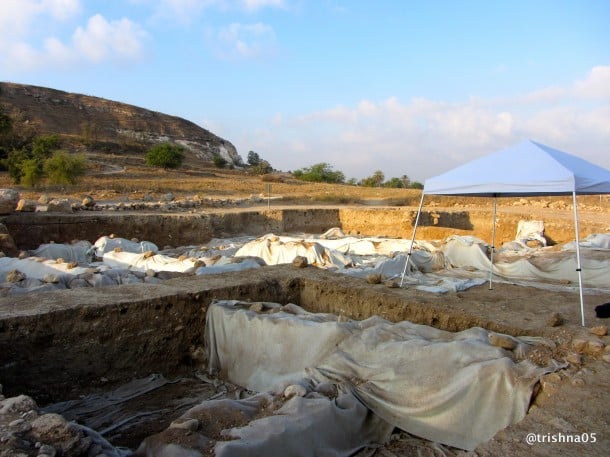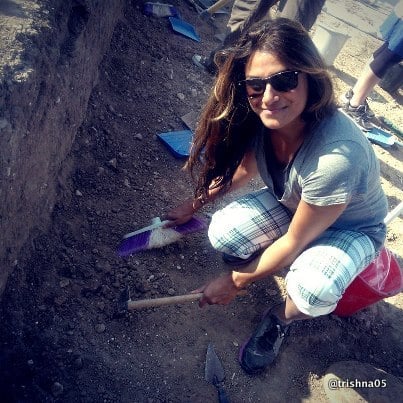
There are a handful of awesome things I will have the opportunity to do in my lifetime. I never imagined digging up 3,000 year-old artifacts at an excavation site in an ancient, biblical city in central Israel was one of them. But that’s exactly what I did.
Every summer, nearly 150 students and professors from all over the world volunteer their time at The Tel Zafit Excavation in the city of Gath. The site is a multi-period, archaeological dig believed to be the home of Goliath, halfway between the cities of Jerusalem and Ashkelon.
In 1996, under the direction of Aren Maeir of Bar-Ilan University an extensive, long term project was set into motion; to excavate, survey, and publish findings focusing on the various cultures and people of that specific geographical location.
Our group arrived early in the morning (important to avoid the sweltering heat) to help with Maeir’s current project. For two hours we took turns digging and sifting through what Maeir told us was the “Canaanite and Philistine level” of the site.
He went on to explain that around 1200 B.C., the Philistines, a group of people from what is now modern day Greece, migrated to southern Israel. According to Biblical texts, they were constantly at odds with the land’s natives, the Israeli Canaanites.
But as Maeir continued to dig, he found that the Canaanites and Philistines were more connected than originally thought. There is physical evidence that the two groups developed intimate relationships and directly influenced one another.

Maeir, who uses the Bible as his guide, says it’s the small yet divulging nuances that make his life’s work so fascinating. These findings provide archaeologists like himself with a guide to both support Biblical stories of how cultures flourished and also allow them to “read between the lines” and gain a more complex insight.
Our group found mostly broken pottery shards of what may have been bowls or wine strainers, with the exception of one fellow blogger who found two intact, upside down bowls. Since the Philistines were defeated during a surprise attack by the King David, it’s most likely we found the remains from the last chaotic moments of their life. This realization was extremely exciting and moving for the entire group.
As much as I’d like to think my brush with “time travel” was an exclusive adventure, it’s not the case at all. It’s something anyone can potentially do. If you’re planning a trip to Israel and wish to volunteer at The Tell es-Safi/Gath Archaeological Project, here’s the information and registration package. For inquiries, find the project on Facebook or email Professor Maeir at arenmaeir@gmail.com.









